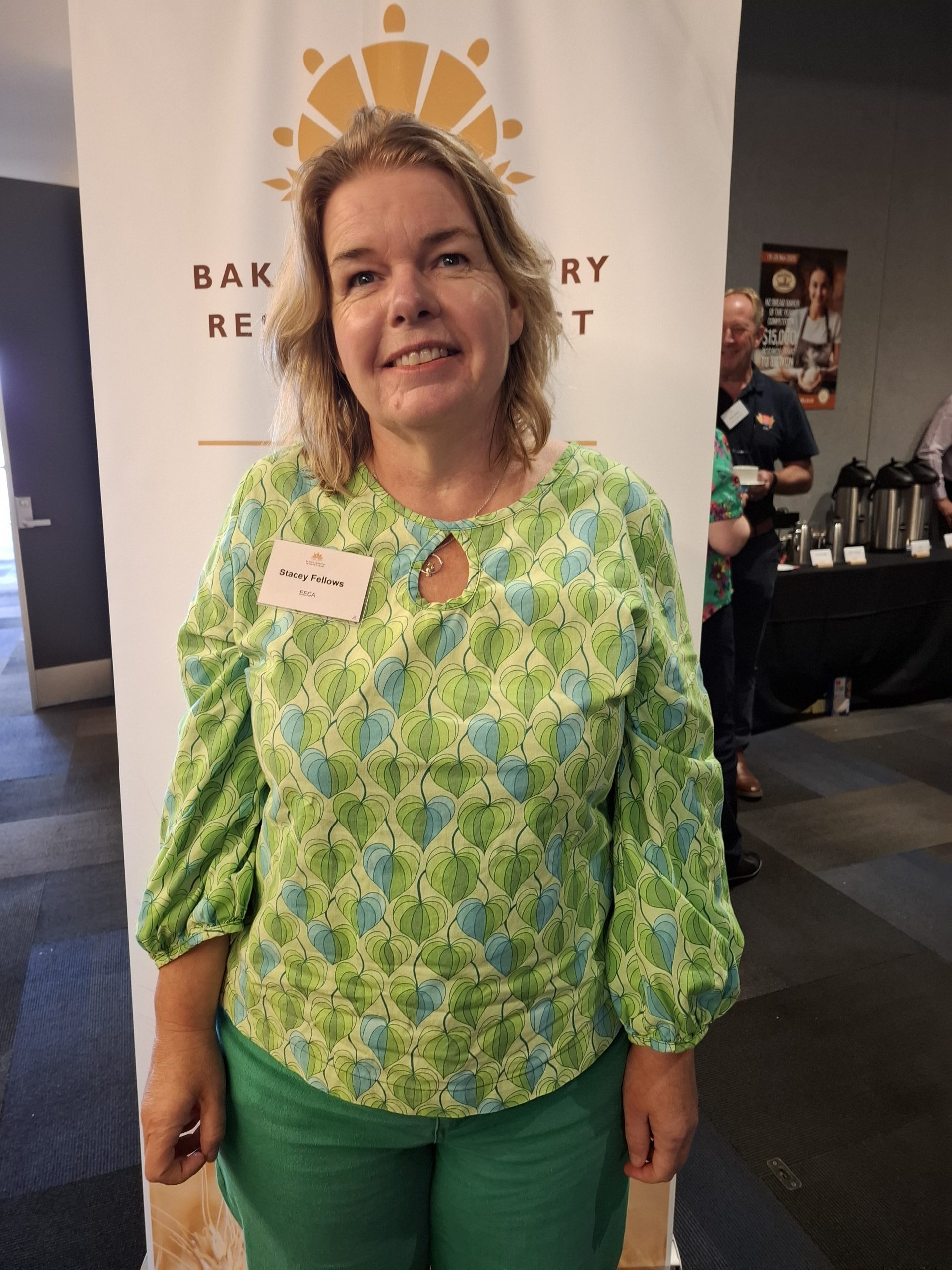Recent Articles
- 2025 Entrants Bread Baker of the Year Competition
- New logo shines light on New Zealand-grown grains
- Recovering valuable resources to create sustainable biogas and biofertilizer
- Field to Flour: Can we reduce our footprint?
- Leading Action on Food Waste
- Bread bags from bread returns
- Baking Global Technology Scan
- Sustainability for the Baking Industry – Food without Footprint
- Better energy management for bakers
- Update on the Soft Plastic Recycling Scheme
Presented as part of Technology Transfer Seminars 2025
Stacey Fellows, Energy Efficiency & Conservation Authority (EECA)
Stacey Fellows is an energy efficiency and sustainability engineer with 20 years’ experience in the dairy manufacturing industry of Aotearoa. Stacey is a firm believer in energy efficiency first, which along with economic and environmental benefits, can reduce the need for energy infrastructure. Stacey is the manager of the Market Partnerships team at EECA (Energy Efficiency Conservation Authority), which includes the sector programme, and enjoys collaborating to action energy and carbon emission savings. Her son Henry is a passionate baker.
Energy efficiency makes sense – use this first says Stacey, then look at renewable energy to save money and the environment. So, what is energy efficiency? Energy efficiency means using less energy to make the same products and services. Energy efficiency is called the “first fuel” in clean energy transitions, as it provides some of the quickest and most cost-effective CO2mitigation options while lowering energy bills and strengthening energy security.
It is entirely possible to achieve good reductions in energy use over time, but you first need to see where your energy goes and to do this you have to think about the whole system, as well as your maintenance routine, not just equipment.
EECA supports bakeries to reduce energy related emissions with tailored tools and resources in collaboration with the industry. This aims to simplify the process of reducing individual business emissions through a guided pathway and support. The pathway connects New Zealand businesses with world-class innovation and best-practice guidance. The focus is on empowering energy users to control their energy use.
The benefits are clear: reduced costs, increased productivity, decreasing your business’s impact on the environment and driving customer interest. There is also the opportunity to future proof your business through collaborative, proactive solutions that can reduce competition for the same services, resources, and opportunities.
Stacey outlined the Five Step Energy Management Pathway for decarbonisation. It includes tailored resources for New Zealand commercial bakeries, enabling them to improve their energy efficiency, save costs, and reduce carbon emissions based on informed decision-making.
Engaging your staff to get excited about energy efficiency is the first step. They need to be part of your bakery’s decarbonisation journey. Measuring and accounting for your energy use is next, then set targets and track your performance. Optimising equipment and improving processes can generate big wins. EECA has a checklist you can use. Reduce your energy demand through new technology or upgrades to processes and carry out an energy scan.
Finally, if you’re thinking of switching to renewable energy, the final step, it’s important to reduce your demand first and then take a holistic approach to the energy mix that is most appropriate. Ensure you make informed decisions about fuel switching by doing the first four steps.
You can visit the EECA website for more information or email Sectordecarb@eeca.govt.nz with your questions.

